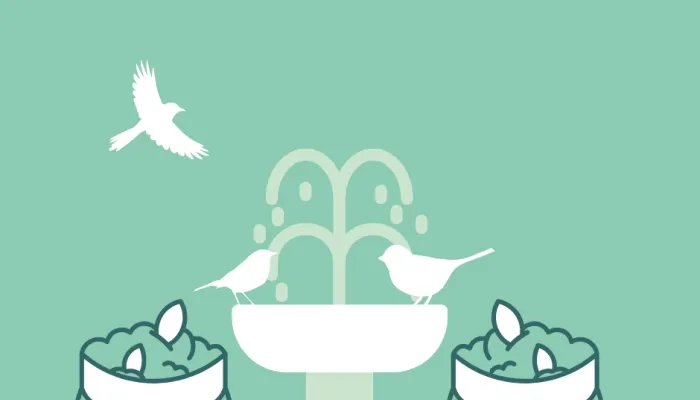Create/monitor a hedgehog feeding station(s)
Providing plenty of natural food for wildlife is the best way to start in looking after your local wildlife. You can start by planting berry- and fruit-bearing trees and shrubs, creating log piles and dead hedges which attract lots of insects, and leaving plants to set seed.
But if you want to add to the wild food available, then some carefully planned additional feeding may help certain species through tough periods. This could be during winter and the ‘hungry gap’ for birds, or periods of drought for species like hedgehogs which may struggle to find enough worms and insects to eat in very dry weather.
When providing food for hedgehogs, it's important to supply clean water for them to drink too. Use approved hedgehog food or meaty cat or dog food; make sure it’s fresh and lists meat as the main ingredient.
Creating a hedgehog feeding area requires a covered space to make sure that other animals - like foxes or pets - don’t get there first. An upturned box weighted down with a small gap to get in will help keep the larger animals out.
Monitoring the feeding station is just as important as creating it - don’t let the food go off, for one! Use it as an opportunity to assess the number and health of your local hedgehog population. Submit your records of hedgehog sightings to iRecord or iNaturalist, or upload them online to Hedgehog Street.
More details on how to create a hedgehog feeding station can be found on the British Hedgehogs website here.
Provide responsible nesting material for birds
Birds needs good quality nesting material to build their nests. A helping hand can be given by providing material in the garden from February through June. Birds nests come in a huge range of sizes and styles, from simple twig structures (such as pigeon nests) to shallow depressions in the soil (made by things like skylarks). The nest we are most familiar with is the songbird's cup-sized nests, nestled in thin hedgerows or tucked away under climbers such as ivy. Providing easy to access materials will help birds conserve energy and make cosy nests in which to raise their young.
Consider leaving twigs, dry stems, and leaves in piles around the garden for birds to find and easily take. You can then also consider adding some hanging wire frames filled with sheep wool, feathers, or moss.
Ideas for bird nesting material to make available in the garden:
- Dead twigs
- Dead leaves
- Dry grass (make sure the grass hadn’t been treated with pesticides)
- Feathers
- Plant fluff or down (e.g. cattail fluff, cottonwood down)
- Moss
- Bark strips
- Pine needles
Ideas for how to provide this nesting material:
- Piles of twigs and leaves on the ground
- Wire-mesh cages
- Materials pushed into tree crevices

